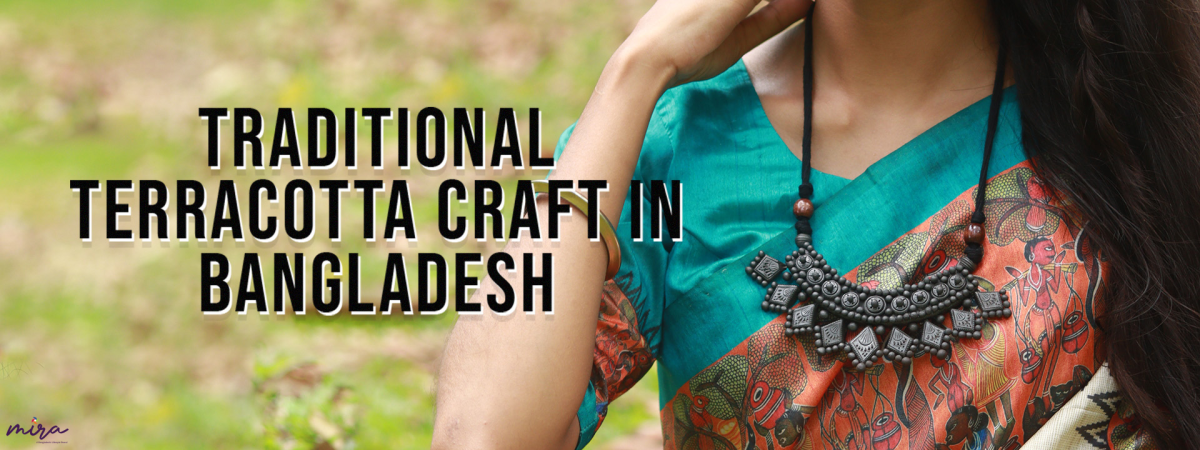
Every country possesses its own unique art and culture, and behind the expansion of each craft lies the contribution of the nation or people. One of the prominent crafts in our country is terracotta. There is a deep connection between our culture and terracotta craft. The term "মৃৎ" (mrit) means clay or soil, and "শিল্প" (shilpo) refers to the creation of beautiful and artistic objects. Hence, any artistic creation made from clay is referred to as terracotta craft.
Through various sources, it is known that the birth of terracotta craft took place in the famous city of Tangshan in China. This is why this city is often referred to as the city of terracotta. This city is located about 150 kilometers northeast of the ancient city of Peiping in China. Various terracotta artworks can be seen in the streets, parks, and entertainment centers of Tangshan. The origin and development of terracotta craft in Tangshan trace back to the time of the Ming Dynasty, during the reign of Emperor Yongle. This city holds a history of nearly 600 years, and it houses more than 500 varieties of terracotta crafts. These include ancient architectural terracotta, health-friendly terracotta, sculptural terracotta, high-tech terracotta, and terracotta art, among others. Many customers still search for Chinese-made artifacts in various shops.
Just as Chinese art has its heritage, our country also has its own. Terracotta craft in Bangladesh dates back to the times of the Mohenjo-daro and Harappa civilizations. For hundreds of years, countless people have been involved in this craft. Those engaged in such work in our country are often referred to as "Kumars." The majority of them are Hindus and share the same surname "Kumar." For the most part, this is a traditional profession passed down through their family lineage. Most of them specialize in creating pottery for carrying water and cooking. Others create vessels for worship and decorative purposes. In the past, clay items made by skilled craftsmen in the village held more value. This craft added a touch of beauty to the surroundings of every house in the village, whether it be a clay pitcher, flower pot, bowl, statue, or toys for children. The main materials for this craft are clay, firewood, dried grass, straw, and sand. Legend has it that if someone gave a potter a clay vessel or a statue of Lord Ganesha, they would receive as much clay as they could hold in their hands in exchange.
The shadow of modernization has caused many traditional terracotta products made from clay to gradually disappear. The business of the Kumars of Kumarpur has suffered. The scent of pottery is rarely found in Kanchamati. The art of terracotta toys is becoming rare. Nevertheless, in the face of adversity, some aging Kumars continue to uphold their family traditions and engage in this business. A wide variety of clay products, such as pottery, flower pots, different garden products, night lights, dining items, and indoor garden items, are still being made in Kumarpur to meet the demand of customers. The main materials for these products are clay, firewood, dried grass, straw, and sand. In addition to these, terracotta items, including pots, flowers, and various shapes, are still being made in the village's workshops and sold in various shops across the country.
Terracotta craft has also made a significant contribution to our economy. The export of terracotta products has increased after the year 2000. Bangladesh now competes with India, the Philippines, and Vietnam in the field of terracotta exports. Besides Europe and America, countries like New Zealand, Australia, and Canada are also importing terracotta products from Bangladesh. If a wide range of clay products are manufactured for export, it can lead to earning more foreign currency.
Among the heritage crafts of Bangladesh, terracotta stands out. It's not just a craft; it's a living heritage and tradition of rural Bengal. Due to the practicality of clay products and the variety of patterns used, there is a growing demand for terracotta products to be exported. It requires more effort to further increase the production capacity and facilitate the producers and artisans involved in terracotta. In order to advance in the enrichment of this indigenous craft, everyone needs to come together with the goal of reaching greater heights.






